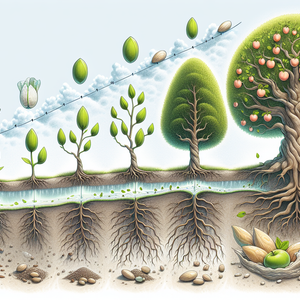Future Trends in UX/UI Design: What Junior Designers Need to Know

Artificial Intelligence (AI) is revolutionizing the design process, offering tools that can streamline workflows, generate design options, and analyze user data more effectively than ever before. For junior designers, familiarizing themselves with AI-driven tools like Adobe Sensei or Sketch's AI plugins can provide a competitive edge. Supporting Example: Consider the use of AI in user testing; platforms such as Lookback and UsabilityHub utilize AI algorithms to analyze user interactions and provide insights into design effectiveness. By leveraging these tools, junior designers can enhance their design processes, allowing them to focus more on creativity and less on repetitive tasks. Moreover, AI can assist in predicting user behaviors, enabling designers to make informed decisions that align with user needs.
Accessibility Enhancements
As awareness of inclusive design continues to grow, accessibility is becoming a non-negotiable aspect of UX/UI design. Junior designers must prioritize creating products that are usable by people with disabilities, which not only meets legal requirements but also expands the user base. Supporting Example: The Web Content Accessibility Guidelines (WCAG) offer a framework for making web content more accessible. Junior designers should invest time in learning these guidelines and using tools like WAVE or Axe to evaluate their designs. Companies that prioritize accessibility often see increased customer loyalty and satisfaction, making this an essential area for junior designers to master. For instance, a well-designed app that accommodates users with visual impairments can tap into an underrepresented market, ultimately driving growth and engagement.
Rise of Voice User Interfaces (VUIs)
With the proliferation of smart speakers and voice-activated devices, voice user interfaces are becoming increasingly relevant in UX/UI design. Designers who can create seamless voice interactions will be at the forefront of this trend. Supporting Example: Companies like Google and Amazon have developed extensive voice interaction capabilities through Google Assistant and Alexa, respectively. Junior designers should familiarize themselves with designing for voice, understanding users' conversational patterns, and how to create engaging voice experiences. Engaging with voice design platforms, like Google Actions or Amazon Alexa Skills Kit, can provide practical experience in this emerging field. As users become more accustomed to voice commands, the ability to design intuitive and efficient VUI will be a valuable skill set.
Emphasis on Micro-Interactions
Micro-interactions—subtle animations or responses that provide feedback to users—are gaining traction as a way to enhance user experience. Understanding how to design effective micro-interactions can significantly improve usability and engagement. Supporting Example: Simple actions like a button changing color when hovered over or a loading spinner can provide users with critical feedback. Junior designers should explore tools like Principle or Framer to create and test micro-interactions, ultimately enriching the overall user experience. These small design elements can create a more engaging interface, making users feel more in control and satisfied with their interactions.
Focus on Sustainability in Design
As environmental concerns become more pressing, sustainable design practices are emerging as a vital trend. Junior designers should consider how their designs can reduce digital waste and promote sustainable behaviors. Supporting Example: An example of sustainable design is optimizing websites for energy efficiency, such as minimizing load times and using fewer resources. Junior designers can research design practices that promote sustainability and advocate for eco-friendly choices within their teams. By integrating sustainability into their design philosophy, junior designers can contribute to a greater cause while also appealing to an increasingly eco-conscious consumer base.
The future of UX/UI design is bright and full of challenges that require both adaptability and foresight. By embracing emerging trends such as AI integration, accessibility enhancements, the rise of voice user interfaces, emphasis on micro-interactions, and sustainability, junior designers can equip themselves with the knowledge and skills necessary to stand out in a competitive job market. As they navigate their careers, staying informed about these trends will not only enhance their design capabilities but also ensure they remain relevant in a rapidly evolving industry. With a commitment to continuous learning and adaptation, junior designers can thrive in the dynamic world of UX/UI design, ultimately shaping user experiences that are not only functional but also enjoyable and inclusive. Understanding these trends will not only allow junior designers to secure job opportunities in a competitive landscape but also empower them to contribute meaningfully to the industry's future.
Junior UX Designer
Tech startups, digital agencies, and e-commerce companies
Core Responsibilities
Conduct user research and usability testing to gather insights for design improvements.
Collaborate with senior designers to create wireframes and prototypes that enhance user experience.
Assist in creating user personas and journey maps to inform design decisions.
Required Skills
Proficiency in design tools such as Figma, Sketch, or Adobe XD.
Basic understanding of accessibility standards like WCAG.
Strong communication skills to articulate design concepts and gather feedback.
Voice User Interface (VUI) Designer
Companies in the tech sector, especially those developing smart home devices, mobile apps, and digital assistants
Core Responsibilities
Design and prototype voice interactions for applications and devices, ensuring a seamless user experience.
Collaborate with developers to implement voice commands and responses effectively.
Test voice interfaces for usability and accuracy, iterating based on user feedback.
Required Skills
Familiarity with voice design platforms, such as Google Actions or Amazon Alexa Skills Kit.
Understanding of conversational design principles and user intent.
Strong problem-solving skills to address user needs through voice interactions.
UI Motion Designer
Digital product teams, creative agencies, and companies focused on interactive media
Core Responsibilities
Create micro-interactions and animations that enhance user engagement and provide feedback.
Develop design specifications and guidelines for motion elements within applications.
Collaborate with UX designers to ensure animations align with user experience goals.
Required Skills
Proficiency in animation tools such as After Effects or Principle.
Understanding of user psychology and how motion affects usability.
Creative mindset with the ability to visualize and execute designs that delight users.
Accessibility Specialist in UX/UI Design
Nonprofits, government agencies, and companies committed to inclusive user experiences
Core Responsibilities
Evaluate digital products for compliance with accessibility standards and guidelines.
Provide recommendations and design solutions to improve accessibility for users with disabilities.
Conduct training sessions for design teams on best practices in inclusive design.
Required Skills
In-depth knowledge of WCAG and assistive technologies.
Experience with accessibility testing tools, such as WAVE or Axe.
Strong advocacy skills to promote accessibility within the organization.
Sustainable UX/UI Designer
Companies in the tech industry, particularly those focused on sustainability, green technology, and eco-friendly products
Core Responsibilities
Implement eco-friendly design practices that minimize digital waste and improve energy efficiency.
Research and advocate for sustainable design strategies within the product development team.
Measure and report on the environmental impact of design choices.
Required Skills
Knowledge of sustainable design principles and practices.
Ability to analyze and optimize digital products for performance and resource consumption.
Passion for environmental issues and a proactive approach to integrate sustainability into design.


